|
Printables |
PowerPoints |
Online exercises |
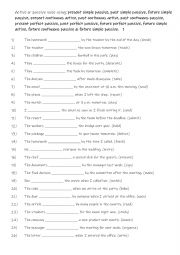
|
B1-B2 Active or passive voice using: present simple passive, past simple passive, future simple passive, present continuous active, past continuous active, past continuous passive, present perfect passive, past perfect passive, future perfect passive, fut
Learning active and passive voice across these tenses enhances students� ability to express ideas flexibly and appropriately. Passive voice focuses on the action or result, especially when the doer is unknown, unimportant, or implied, making it essential for formal contexts like academic writing, journalism, or reports. Active voice, on the other...
Level: intermediate
Age: 10-100
Type:
Downloads: 113
|
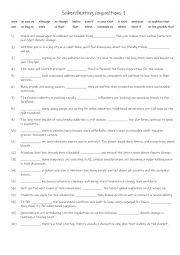
|
B2-C1 20 subordinating conjunctions 1
Students should learn subordinating conjunctions like since, as soon as, although, before, and others because they help create more complex and meaningful sentences by connecting dependent and independent clauses. These conjunctions allow students to express relationships between ideas, such as time, condition, contrast, and purpose. For example, t...
Level: advanced
Age: 11-100
Type:
Downloads: 113
|
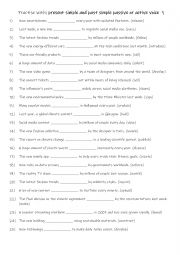
|
B1-B2 Practise with present simple and past simple passive or active voice 1
Students should learn Present Simple and Past Simple in both Active and Passive voices because these tenses are essential for effective communication. The Active voice allows students to describe routines, habits, and completed actions clearly, while the Passive voice helps shift focus to the action or the object, which is important for various sit...
Level: intermediate
Age: 10-100
Type:
Downloads: 113
|
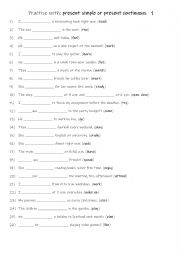
|
A1-A2 Practise with present simple or present continuous 1
Students should practice the present simple and present continuous tenses because they help distinguish between routines or facts (present simple) and ongoing or temporary actions (present continuous). Mastery of these tenses boosts confidence in daily conversations, ensures clarity in expressing different types of actions, and forms a foundation f...
Level: elementary
Age: 8-100
Type:
Downloads: 113
|
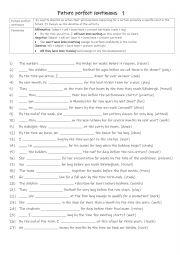
|
B1+-B2 Future perfect continuous 1
Students should learn the future perfect continuous because it enables them to express actions that will have been ongoing for a specific duration before a certain point in the future. This tense is particularly useful for discussing long-term plans or commitments (e.g., By next year, she will have been working here for a decade) and for highlighti...
Level: intermediate
Age: 10-100
Type:
Downloads: 113
|
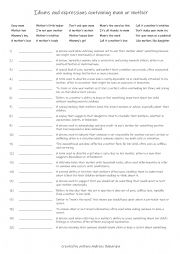
|
20 idioms and expressions containing mum or mother B1+-C1
Learning idioms and expressions containing "mum" or "mother" helps students understand the deep cultural significance of family roles, especially in English-speaking societies where such phrases reflect affection, wisdom, or stereotypes. These expressions often capture universal themes like care, love, or intuition, making them relatable and useful...
Level: intermediate
Age: 10-100
Type:
Downloads: 113
|
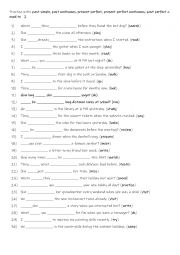
|
perfect, presenA2+-B1 Practise with past simple, past continuous, present t perfect continuous, past perfect & used to 2
Practising these tenses helps students express different aspects of time and actions effectively. The past simple is vital for describing completed actions, while the past continuous sets scenes or shows interruptions in the past. The present perfect connects past actions to the present, and the present perfect continuous highlights ongoing or repe...
Level: intermediate
Age: 9-100
Type:
Downloads: 113
|

|
A2-B1 Practise with for, since, while & during (4)
Learning to use for, since, during, and while is important because these words help student�s express time accurately in English, especially when talking about the duration and timing of events. For indicates the length of time an action takes place, while since pinpoints when an action started and continues until now, helping to show continuity. D...
Level: intermediate
Age: 9-100
Type:
Downloads: 113
|
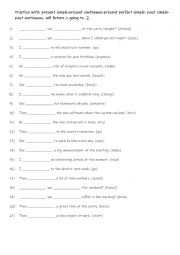
|
A2+-B1 Practise with present simple-present continuous-present perfect simple- past simple-past continuous- will future & going to 2
Students should learn to practise tenses like the present simple, present continuous, present perfect simple, past simple, past continuous, will future, and going to because they are essential for expressing actions in different time frames. These tenses help students describe routines, ongoing events, past experiences, and future plans clearly and...
Level: intermediate
Age: 9-100
Type:
Downloads: 113
|
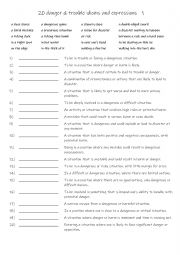
|
B1+-C1 20 danger & trouble idioms and expressions 1
Learning danger and trouble idioms offers numerous benefits. It enhances comprehension by helping students understand common expressions in everyday conversation and media. These idioms provide cultural insights, showing how native speakers view risk and challenges. They also allow students to express complex ideas concisely and vividly, making the...
Level: intermediate
Age: 12-100
Type:
Downloads: 113
|
|
|
|
|












